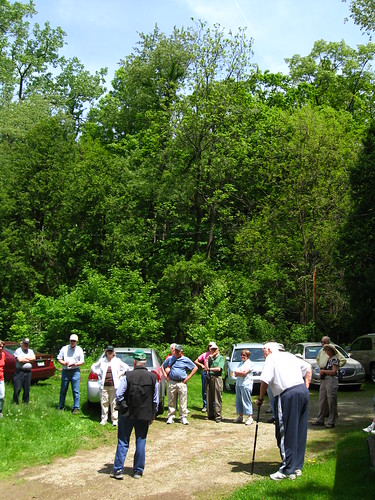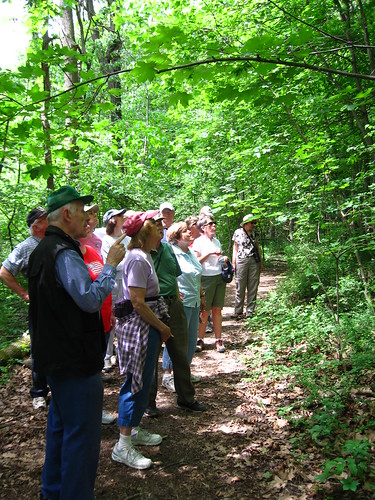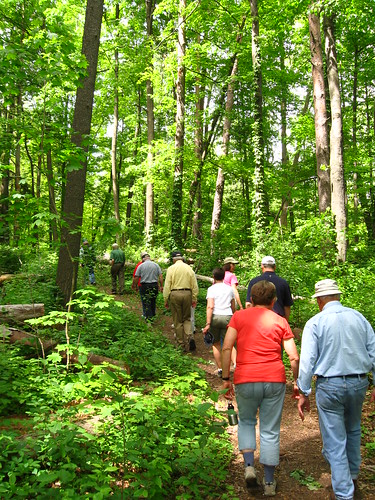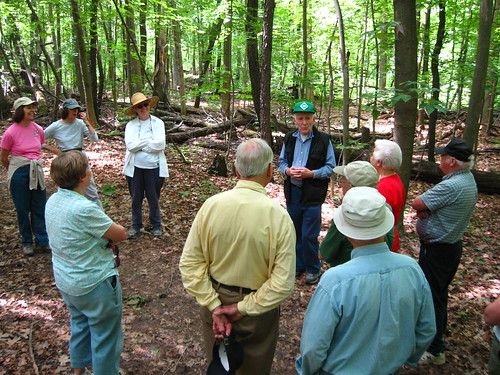- There was an historical offer to clear-cut some of the forest, which was declined.
- The scots pine planted north of the lake is uncommon because of its straightness (normally, they grow a little crooked).
- There are measuring tapes that allow one to quickly determine the diameter of a tree.
- At least one catalpa remains on the north side of the lake.
- A new species of tree was discovered in Saginaw Forest during the last century.

Gathering in front of the cabin: some introductory pre-"amble" comments.

The arboretum: investigating some of the variety of tree species planted in the forest.

Ambling: walking through the (originally planted) pine stands. These stands were planted waaay back in 1904. This particular section (between stands 2a and 2b) has suffered a lot of wind damage over the years (and is now having to suffer ivy).

On the ground discussion: stopping to listed to a brief explanation of how forest stands can retain diversity, thanks to tree gaps. Also a discussion on how selective forestry can actually seriously degrade a forest, using the example of Beaver Island.
No comments:
Post a Comment